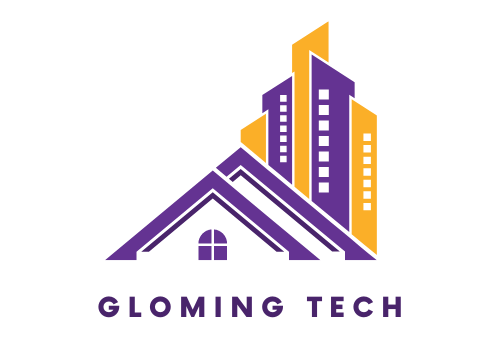Introduction: Blockchain Construction Builds On the Concept of Switching

Blockchain technology has been a game-changer in different fields as it provides distributed, low-cost and open solutions. While the majority focus on cryptocurrencies and most recently smart contracts, smart switching is one of the key potential improvements that lies underneath and is, sadly, the least conceited. Essentially, switching is the movement from one state, protocol, or even a whole network to another to allow the evolution of blockchains. It could be corrections of the consensus mechanism of earlier versions, more sophisticated security measures, or new features for the participants, switching makes sure that the blockchain does not become static but rather, it is ever active.
What is Blockchain Construction?
Construction in a blockchain is a positioning of the blockchain in the construction space. It entails the use of the distributive ledger to keep records of transactions which need to be safe and without corrupt activities. This technology has so much capacity in mitigating many of the challenges which beset, for instance, the construction industry, fraud, time overrun of projects and cost overrun.
It is worth getting below the surface where the term Blockchain construction is said to facilitate more than simply switching the constructors for instance. The term Switching is understood as an action or a process that enables certain items in the system to be changed, moved or simply exchanged. In the case of blockchain construction, it means that the contractor or material suppliers or even project plans can be changed without any difficulty since everything works on the basis of blockchain which guarantees safety and visibility.
The Basics of Switching in Blockchain
- Switching is not a recent idea; it dates back to many years in different formats. Nevertheless, the concept of switching with blockchain technology improves the effectiveness of such a process. In the construction of the blockchain, switching can be put into numerous uses such as:
- Contractor Switching: Employ a new contractor easily if the former contractor is unable to deliver satisfactorily.
- Material Switching: Change materials that have been selected with other alternatives in a short time if the selected ones are not ok.
- Plan Switching: Modify even the project’s plan changing without being behind schedule or creating confusion
Why Blockchain Construction Matters

The construction industry is infamous for high levels of waste and lack of accountability. These are exactly the kinds of challenges that blockchain construction tackles. It really helps. With a distributed ledger, there is no lack of records since all the activities performed are documented. Such accountability helps reduce the temptation to commit fraud and builds trust among the parties involved.
As well, that concept of switching provides more agility in the processes of construction. Even when such changes arise, projects will progress smoothly and reduce delays and expenses on overrun costs.
How Blockchain Construction Works
There are several key components in regard to Blockchain construction.
- Smart Contracts. These are executed through code instead in the form of documents as they are created. They provide rule management and penalties which reduces the need for intermediaries.
- Decentralized Ledger. This is used to capture all the transactions made and the changes therefore enhancing the structural visibility of the system.
- Consensus Mechanisms. The consensus mechanisms assure the parties that all the other parties will validate the transactions before they can be recorded which fortifies faith.
Case Study 1: Reducing Fraud in Construction
The construction industry in particular suffers from fraud which occurs to the tune of billions of dollars lost worldwide each year. Blockchain construction can work in real life, handsome earning being achieved and fraud being reduced in a case study example of Breniren where the company reported utilization of Blockchain so that it records all transactions. This makes it next to impossible to have any changes or alterations in the information contained since all of it is recorded in a decentralized manner. The transparency also discourages malpractices in terms of the fraud and ensures that all the stakeholder’s are accountable.
Case Study 2: Enhancing Project Management
The processes that deal with projects in construction practices are often susceptible to time and communication constraints. Construction based on blockchain expands on the model of transitioning into better ways of handling tasks. For example, a contractor who cannot keep deadlines can easily be changed without the existence of interruptions in the project. Such versatility minimizes chances of delay in the completion of projects and overspending.
Benefits of Blockchain Construction

There are many advantages connected with the use of blockchain in construction including the following:
- Accountability: As a general rule, every transaction is kept on a single ledger which cannot be tampered with by anyone thus accounting is in itself a security.
- Integrity: Information that is kept electronically against changes made by unapproved persons is high because the nature of records on the blockchain cannot be modified.
- Simplification: The idea of switching in and out of given tasks eliminates time wastage and therefore reduces possibilities of going overboard cost wise.
- Value: Due to increased control and accountability confidence is restored to project participants which leads to more effective participation.
Challenges and Solutions
Despite the fact that there is a great possibility of blockchain construction, however, there are difficulties that should be resolved. One such difficulty would be change management. Change in the construction domain, as a rule, takes a lot of time. However, since it is growing up, it is thought that it will also gradually grow.
There is also the disadvantage of the cost of the introduction of blockchain technology. However, this cost is outweighed by the savings that will be achieved over time concerning the reduction in fraud and enhancement of efficiency.
The Future of Blockchain Construction
The potential for transformation brought about by blockchain construction is encouraging. When this technology is adapted by many construction companies, we will witness marked development in the construction industry. The introduction of switching will also enhance versatility in the course of the performance of construction works modifying the scope of the projects so as to minimize the possibility of interruptions and other unforeseen occurrences.
How to Get Started with Blockchain Construction
People wishing to learn more about construction on blockchain can follow the steps below:
- Research: Get relevant information regarding the technology and its uses in the construction field.
- Partner with Experts: Engage advisors who have knowledge of blockchain construction so that they instigate the technology.
- Pilot Projects: Test the technology first and identify the pros and cons in pilot works.
- Training: The employees should be sensitized on how to use the technology properly in the organization.
- Monitor and Improve: Track enhancement of the performance all the time as well as assessing what can be done to enhance the implemented improvements.
FAQs: Blockchain Construction Builds on the Concept of Switching

What do you understand by the term blockchain switch?
A blockchain switch is any activity aiming to change a protocol or a system or a state of an existing blockchain network for better usability, security or scalability.
What is the reason behind switching to Ethereum 2.0?
Ethereum 2.0 switching changes the consensus mechanism by replacing Proof of Work (PoW) with Proof of Stake (PoS) and this is done to get more scalability, reduce costs as well as improve security.
What are Layer Two solutions?
Layer Two solutions are secondary protocols to the primary network designed mainly towards speeding up transactions and enhancing growing scalability by switching the user from one layer to another to improve network performance.
Is switching beneficial to blockchain scalability and how?
Switching assists blockchains in adopting solutions such as sharding or side chains as the burden is shared and more transactions can be processed on the network.
Is it all bad news when you want to switch a blockchain?
Yes, there can be risks on a switch like overcoming rarities, synchronization failures, stoppages, and even other associations that are adverse; even so, these risks will often be lesser than the advantages of the upgrade.
Conclusion: Blockchain Construction Builds On the Concept of Switching
As time progresses in the age of blockchain, switching will thus become more essential in facilitating the adoption, security, and scalability of the technology. Switching is the answer to solving issues such as upgrading consensus mechanisms, implementing sidechains and developing Layer 2 solutions.
Alteration or switching ensures that any technology that uses the blockchain can stretch and adapt to new problems but still retain general features of decentralisation and security. Being a Developer, an investor or even a user in the ever dynamic blockade ecosystem, switching comprehension will help you remain relevant in it.
